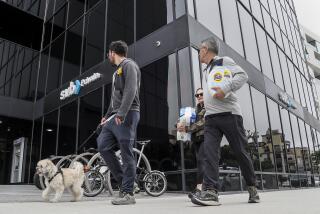Regulators Move to Close Loophole in S&L; Law
- Share via
WASHINGTON — Regulators are moving to close a loophole that threatened to allow savings and loans to evade some of the changes in last year’s thrift bailout law.
The board of the Federal Deposit Insurance Corp. voted 5-0 to ask for public comment on a regulation that would prevent S&Ls; from avoiding certain restrictions by becoming state-chartered savings banks.
If given final approval, the rule likely would become effective in about two months. Office of Thrift Supervision Director Timothy Ryan vowed to block S&L; conversions until then.
State savings banks, common in Northeastern states and the Pacific Northwest, are hybrid institutions, a cross between a commercial bank and a savings and loan.
Depending on the state, many have retained broad investment powers, including the right to buy junk bonds and, in some instances, own subsidiaries engaging in activities normally considered too risky for banks, such as commercial real estate speculation.
Since passage of the S&L; law in August, 1989, there’s been a growing movement by S&Ls; to change their status to state savings banks. Nineteen states have passed or are considering laws permitting S&L; conversions.
The industry argues that S&Ls; trying to convert are doing so not to evade last year’s law, but to avoid the expensive examination fees imposed by Ryan’s agency.
The proposed rules would prohibit S&Ls; that convert to savings banks from investing in junk bonds or from using federally insured deposits to finance high-risk subsidiaries. It would also sharply limit the amount they are allowed to lend to a single borrower.
However, converted institutions would not have to abide by rules requiring S&Ls; to devote 70 percent of their assets to housing.
More to Read
Inside the business of entertainment
The Wide Shot brings you news, analysis and insights on everything from streaming wars to production — and what it all means for the future.
You may occasionally receive promotional content from the Los Angeles Times.










